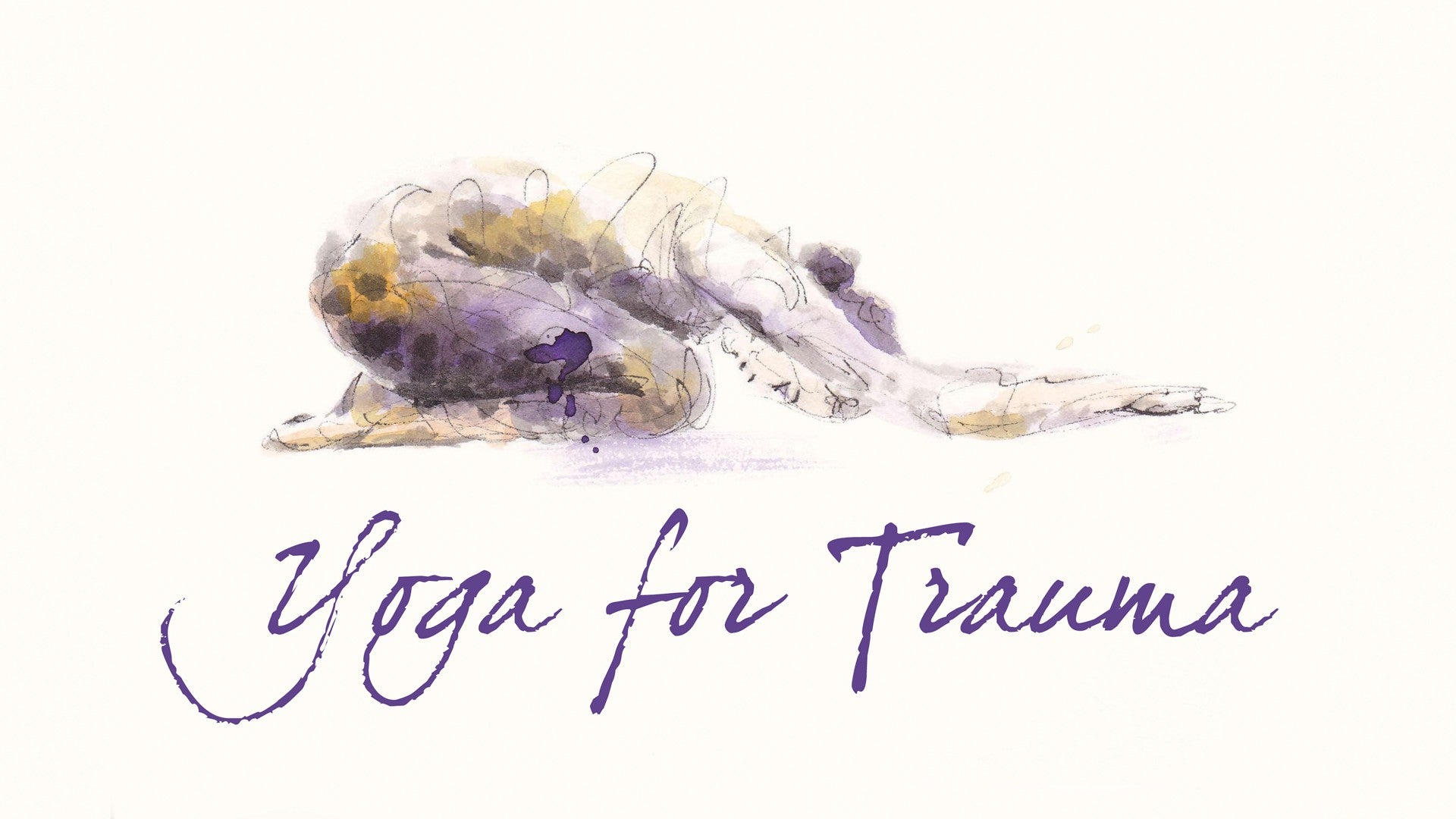Description
About This Video
Transcript
Read Full Transcript
Hi, welcome. I'm here to talk today a little bit about stress, trauma and it's impact on the body. Life is stressful, you know, and that's not necessarily a bad thing. We need stresses in order to build our resilience and our strength and often times it's really what makes us who we are. But an overwhelm of stress on the system actually is pretty toxic for your body and for your mind.
It would be great if we could stop stress and traumatic experiences from happening in our lives. In fact many of us try to do that, we try to manage where we're going to go, who we're going to be around, what our actions are just to keep everything tight so we don't ever have to experience that stuff that's really intense. But the reality is is that we can't stop stress and we can't stop traumatic events from happening. Trauma and stress are an inevitable piece of life. But living with that, it does not have to be a life sentence.
Our bodies have an organic intelligence that can help re regulate after these experiences, can help re regulate our minds, our hearts, and our systems. And ancient Yogis knew this. They knew that there was a direct mind body connection. Only now is the recent scientific field in neuroscience field starting to substantiate what they knew thousands of years ago. That if you help connect the mind and the body and allow it to do what it does, there can be healing, there can be space and there can be a new lease on life.
A connection to your own vitality. What actually is trauma? Let's go a little bit deeper into to it to try to understand. Trauma's really an overwhelm of stress is really when the physical or emotional body is overwhelmed and the person just kind of can't come back into organization from it. When this happens earlier on in someone's life, especially like in childhood, it's harder for that individual to regain balance and kind of organization and direction.
Especially without the help of an adult or care giver to guide that. On a broader level, trauma's really a breach of boundary and border at the physical, mental, emotional or even behavioral levels. Now it can come in from a couple of different events. Shock trauma is one. It's something that happens too quick, too fast.
This could be natural disasters, car accidents, war, attacks, falling off a bicycle, sometimes we forget that even the small things can be really overwhelming to a system and remember the earlier on these things happen to a brain, the bigger they feel. So the smaller things can make a big difference. In addition to the shock traumas, there's also developmental trauma. Developmental trauma is really when children in their development weren't attuned to by the parents. Their needs weren't really being seen or met.
So an example of this might be a child really crying and whining cuz it's hungry or tired and the care giver just being exhausted and overwhelmed and just like, "Why are you doing this to me? You're such a bad kid." and just not kind of giving the reflection of the needs that need to met. This developmental piece is really important. Attunement especially in the earlier years, from zero to two, really happens in a nonverbal way. Babies don't understand language. They do understand the coos or the eye gaze or the touch or the closeness or the tone that's around them, and that's what creates safety.
And really at the heart of all of this work, it's how do we know we're safe or we're not. And we need each other, we need our environments to give us a reflection of what's okay to approach and what should be avoided. So the care giver relationship, if their isn't that attunement, doesn't create a template for safety that's needed in the world. And then the last category of types of trauma is complex. Very few people when they'll come into my office will just have one experience.
They only in their life had a car accident. Most people come in because they kinda had a combination of both. They didn't quite get the attunement they needed while they were growing up. They had a couple of rough experiences and so it's kind of compounded on one another. Okay, so what's really happening though when there's missed attunement over years and years and years?
Or when there's a shock trauma that's overwhelming? Well, in our normal lives, and you might even want to do this with me. Most people are walking around like this, okay. This is a little symbol of the brain. Here in the arm is kind of like your spinal column and the brain stem and then it goes up here to the lower brain and this part of your brain helps involuntary functions, your heart rate, your digestion, your sex, your sleep.
Then you go up here underneath the fingers and here's you thumb and this is the emotional brain and this is the part that also has memories, it's kind of like your smoke detector here, it can detect when there's threat, it can also detect where there's love and connection. And you the close the top and the top of our brains is more of our logic and as we develop this part of the brain is what really gets wired. It's our language center, it's also our empathy center, how we feel other people and it's how we make good decisions in the world. So normally if we don't have a lot of crazy months of stress or trauma in our body, we're walking around like this. And something happens, we see a rope in the road and all of a sudden, ooh, we get a little scared we think it's a snake, but then our logic brain has enough control to come back over and be like, "Oh, that's okay emotional brain. Calm down.
"We gotcha it's just a rope," and you keep going on. Okay, so how does that even work? Now imagine right now, and if you've had an experience with a bear you might want to press pause, but imagine right now you hear a bear, it's (knocking) coming in like right through the door, well the bear wouldn't knock, but it's pounding on the door, okay. So it starts to come in and all of a sudden what would happen in your body, right. You might start to sweat, you might freeze for a moment and realize, oh my god, there's a bear there! And notice my body even thinking about it is starting to activate where my muscles are getting stronger, there's more blood flow that's leaving my stomach, so my stomach shuts down.
It's leaving my stomach going to my limbs, going to my legs, my heart rate starts to go up, my breathing gets a little bit more shallow, my eyes starts to go into more tunnel vision, and I'm preparing to fight or flight. So the bear comes in and I see it and I run, run, run, run and out the other door. As I'm doing this, all that adrenaline and cortisol that was being pumped into my system to save my life to get away from the bear, I get to use by running, I get it out of my system, and then once I run far enough away, I start to shake a little bit, my breathing starts to calm down, my heart rate starts to calm down, I naturally just start to look around me like what the heck just happened. I might pick up my phone and call a friend and be like, "Oh my gosh, I was just talking about trauma "and a bear came in. "(sigh) And then I would process this through stories all the while I might shake, I might cry a little bit, I might sweat, but that flood of adrenaline and cortisol that was pumped into my system would actually get discharged. Would be able to leave the body.
I'd be able to do something with it. The same thing is true if the bear comes in and let's say there isn't another door for me to run out of. I have to fight the bear. So all the sudden this super human charge of adrenaline and cortisol comes into the system and many of you may have heard of the stories of like grandmothers getting a super human strength where they can actually lift cars off of babies. That happens when you're actually in a life threatening situation or even a perceived life threatening situation.
Your body gets flooded with these chemicals, right, but it's to save our lives, so all of a sudden I might just pop the bear in the nose. And the bear goes, oh, and falls over and I realize, okay, now I can get away. So all of that energy or chemical energy that was mobilized in my system gets used by completing my threat response. My fight response. And then I can run. (sigh) And then I realize I'm starting to go into safety, I'm way out in the parking lot and my body starts to shake and I let it shake and it sweats and I start to look around and I realize I'm okay, I'm safe.
And I call a friend and I process it. And afterwards I can go to the zoo. I can see a bear. I can even watch National Geographic videos of it. But that's not always the case for those of us who weren't able to get away from a threatening situation.
So when the bear comes in, what's happening with my autonomic nervous system is what I call the gas pedal. It goes into sympathetic arousal, that's the gas pedal. It's like everything starts to activate, you shut down the things you don't need, you shut down the digestion cuz that's not important to saving your life right now. And the mobilize the energy to the limbs and then the heart rate goes up to leave. So this is all sympathetic arousal, the gas pedal.
Now when I start to calm down and realize I'm in safety, that's what I'll call the autonomic nervous system's brake pedal, the parasympathetic system. This is always happening, right, as we breathe in our heart rate goes up, as we breathe out out heart rate goes down, so it's sympathetic, parasympathetic, it's always kind of a wave. With these fight flight reactions though, there's a tremendous amount of gas and then slowly the brake pedal will come on when we realize there's safety. Now if running away or fighting our way out of the situation or the situation doesn't change, are not options. What often happens is the gas pedal and the brake pedal will go on at the same time.
There's just too much going on and the system knows it can escape, so it actually goes gas, brake, errrk, freeze. And the freeze response happens. Now freeze is also incredibly protective, you know we've had it for thousands of years and animals in the wild go through this all the time, possums it's a life saving response for that and it is for us as well, as long as we don't stay in that response for too long. It's when we get stuck in this freeze response and stay there without discharging that all of that chemical experience, that overwhelm that's also coupled with fear, fear of losing our lives, a sense of scariness, that's when we start to experience trauma. That's when everything else starts to shut down around us.
It's the stuck energy that creates a physiological dysregulation in the system that results in traumatic symptoms. For years and years and years, trauma was just thought of as a psychological problem. Somebody may be being too weak to come back after an event, but really what science has shown is that it's actually physiological. Our nervous systems and brains are not operating in a congruent even way as it did before the event. So one of the people we have a lot of credit to give in terms of this work is Peter Levine, Dr. Peter Levine.
He's the founder and creator of Somatic Experiencing and his work years ago, I think about 40 years ago he was watching old videos, like National Geographic videos of animals in the wild, cuz his question was, why are we getting traumatized, but animals go through life threatening experiences every day and they're okay. So he was watching these things happen and an example would be the fox chasing a possum. So a possum's got these tiny little legs and the fox smells its prey and it starts running after it, and so the possum starts to run, it gets that gas pedal going, that sympathetic energy going, but its tiny little legs it knows it's not going to outrun the fox and the fox is getting closer and closer and it knows intuitively it can't fight the fox. So what does the possum do? It rolls over and plays dead and it does this very impressively, it really looks like it's dead and so the fox kind of sniffs around and it also doesn't really smell any of its prey scent and kind of gets bored and walks away.
So as the possum wakes up and starts to come back to just consciousness, what happens in kind of fast motion is it goes, and then walks on. And doesn't go to a bar, and it doesn't go to a therapist, it just goes back out into the wild and does its thing. So when Peter started slowing this footage down, he realized what was happening is that the possum was completing these threat responses. It was actually going through the motion of running, running, running getting away from the fox and then once that energy that had been mobilized to protect it, the adrenaline cortisol response had been discharged through the running, then the body started to tremble and it didn't shut it down because it felt like it was weird or any other possums were going to judge it. It just let itself tremble, tremble, tremble and then naturally it would orient to its surroundings bringing its brain's awareness to present moment that there isn't threat, which brought in, there's all these neural pathways that are connected from that motion down into the lungs and the heart and it would start to just breath naturally and the breathe would then continue to put that brake pedal into the system calming and returning to regulation.
So it froze it discharged and came out. So why do humans end up with so much trauma and so much like overwhelm of stress that causes anxiety disorders or depression disorders? We do have the same response as that possum. We do have the capacity or the organic innate instinct to release and to let go of that mobilized energy. But we tend to shut it down.
We have these big brains, which is a really cool aspect of our character and it's also kind of a challenge, it gets in the way. We get worried about what people are going to think if we cry or shake. We get scared of it ourselves, what does that mean? Am I going to die? Like I'm not in control.
It often doesn't feel safe to us. Recently I was driving in Los Angeles and I was on the highway and I saw a car accident and an airbag had gone off, so I pulled over to see if everyone was okay and the woman was standing there and she had just gotten out of the car and I could tell she was in the state of freeze. She had been hit from behind physically she was fine. She could move around. She said, "I think I'm okay." And she was just starting to go through all of her wallet and information to get her insurance policy and to start to call people, but you could tell she was shaking and wasn't quite organized.
This is a really common response. We just want to take care of it and get out of the way and pretend like it didn't happen. But really what was happening, I introduced myself and I asked her if it was okay if I actually supported her by putting a hand on her shoulder and suggested she sit down in her car and as we did this, if you could just feel your feet, if you could just feel yourself in the seat, and just notice what you're noticing. And I said you might even feel shaky, you might even feel like crying, and all of a sudden I watched her face kind of turn a different shade from really pale white to pinkish and then just start to cry and shake a little bit. And just having that other person to say, "It's okay to do this, "this is totally normal." allowed her to start to release or discharge some of that activation that had come up.
This is such an important aspect on how to avoid trauma if possible is to really allow the processing, not only just of the story and the meaning, but also of the emotions in your physical response. Really giving it space to let it unwind as it needs to and come back into regulation. If this doesn't happen people tend to develop different symptoms. Some of our coping mechanisms might be to just totally shut down, that might mean after a long day of work and something hard happens, you go home and instead of dealing with it or feeling what's going on in your body, it might be a bottle of wine, or a pint of ice cream, or just a whole bunch of TV, or online shopping, or it might be the opposite response. You've got so much in you that it feels like you are always on, where there's a ton of anxiety and the mind starts ruminating and thinking and thinking and thinking what else could be wrong.
Or there's a lot of anger and it starts to explode on other people, or even internally on yourself, and like negative self talk. So these can be the results of not actually processing some of this physical charge in the system. So imagine this scenario you had kind of a bad day at work and you're not quite sure if you're going to get fired. And so you're driving home and all of a sudden someone just cuts you off. Think about your reaction.
The first reaction might be, whoa, slam on the brake, you know you're okay, but some of us might yell, some of might get really frustrated, and you might have the instinct of like, uhh, I just want to kill that person. So a brain that isn't holding or nervous system that isn't holding a lot of trauma, would be going along normal, all of a sudden they get cut off, and oof the emotions would fly open and then all of a sudden pretty quickly the logical brain would come back on and say, "Hey, Kira you've had a really bad day at work, "you know you're really stressed out, "get it together, "take a couple breaths, "calm down you're driving." Now if we're holding a lot of dysregulation in the system and this emotional center is a little wonky and can't quite get a good clear view of what really threat is or isn't, everything just seems really sensitive and we're always on alert. If that's the kind of energy that we're working with and then all of a sudden we've had this bad day at work, and we're driving along and someone cuts us off, it might fly open and the emotional brain might actually take control. The logical brain can't come back on, and so that person might give the finger to the person in the other car, they might lay on the horn, they might actually start to chase them, and God forbid they might actually take out a gun. So this fact of people not being able to physiologically as well as psychologically kind of release and process the overwhelm of stress they've experienced is not just an individual concern.
But it's also more collective community and social concern as well. Because when there's a lot of stress in the system, it can perpetuate violence and it can perpetuate more disconnect between people and communities. One of the keys to discharging this stuck energy is working with the body and the nervous system. This is one of the reasons why I'm so passionate about using Yoga as a potential resource to do that, because it's free. Everyone can or should have access to it for a few simple techniques that can help the system find enough safety to feel again and to maybe not be as scared to move through some of the discharging or releasing patterns that are needed.
So in order to find healing, or resolution from anything, our systems need safety, and that safety is created through relationship, through healthy boundaries, and through anything that helps us feel like a physiological sense of well-being, stability, grounding, centering, present moment. Because after all trauma makes us constantly aware of the past or the future. It's very, very rare that we're actually in the present. Yoga is a natural compliment to helping restore the health and well-being in the system. It integrates the mind-body connection, which will help reestablish a sense of flow, because really when we get overwhelmed and start to shut down and freeze, the joints, the body, the system locks up and we lose that connection to our natural fluidity.
It also works with the breath, which will help the blood pressure, help the heart rate start to slow and get into more of a rhythm, it brings attention to present moment, which can give you a better sense of like, how am I actually feeling as opposed to what am I perceiving myself to feel. And depending on how it's taught, it actually can help you make it safe again to feel the body, and to touch into things that are potentially uncomfortable or challenging and know that you can still make it through. A trauma-informed yoga perspective takes into consideration that healing and restoration need safety, and that's not something I can tell you to feel or anyone else can tell you to feel. It's only something that you can reclaim for yourself, by dipping your toe into different experiences and seeing what works for you. Because of this in the trauma-informed perspective, we move a little slower, so slow is fast is one of the phrases we use.
And less is more. We also recognize that since the dysregulation is happening not so much at the logical brain, logically most people who are dealing with overwhelms of stress and trauma know that their current environment is safe. That's not questioned. We know that the dysregulation is happening more at the emotional brain and the lower kind of reptile old brain, and that's what we have to appeal to. And these parts of the brain, they don't have words, they have sensory experience, so throughout our trauma-informed practice you're going to hear me giving more cues of what potentially could be going on inside.
What does something feel like? What's the texture? What's the sound? Does it have a color? What are these details, and how are these details showing up in our system?
That's called the felt sense. We're also going to be working with resources. Resources are anything that can help you feel a sense of safety, grounding, centering or orientation to the present moment. We'll talk a little bit more about that in the tracking and resources section. But just going back to it, at any time during the practices you do with me in this show, or with anyone else or really anytime in your life, if you start to feel overwhelmed, use these resources to come back and take care.
So there are a couple of rules to the practice, and some of them I didn't make up (laughter), but someone did about 5,000 years ago and they seem to work so I go with them. Just being kind to the self. Yoga is not a magical cure all for trauma or stress, but it can be a really profound tool, especially if you do this in conjunction with some sort of talk or a narrative therapy that can help you make some meaning of it, cuz that is important also. As you go through this practice there are some things I want you to just be aware of. Consider approaching this with curiosity, just a playful exploration of what possibly is and could be.
Practice permission. This is your practice, nobody else's. This is your mind and your body, nobody else's. And only you know that inner landscape, so really listen to what's happening inside and give yourself permission to honor the needs of your system. Get support.
If you don't already have it, get support. We are social critters and our brains, that we've been talking about, and how trauma affects it. It's a social organ. We need each other. Connection, relationship is one of the fundamental pieces of how we know that we're safe in the world, so see where and who in your life can also be of support in your process in your journey of this healing.
And be patient. This takes so much courage and you are incredibly brave for even touching into this, so everything shifts with time, if we give it enough space. Be patient. These practices have been designed to help you go in and explore this inner landscape. Thank you so much for showing up, and we're in this together.
Yoga for Trauma
Comments
It is such a vital process! Glad you were able to connect with that and hope the upcoming practices might deepen that experience.
Goodness, Kyra.
You need to be a subscriber to post a comment.
Please Log In or Create an Account to start your free trial.


















